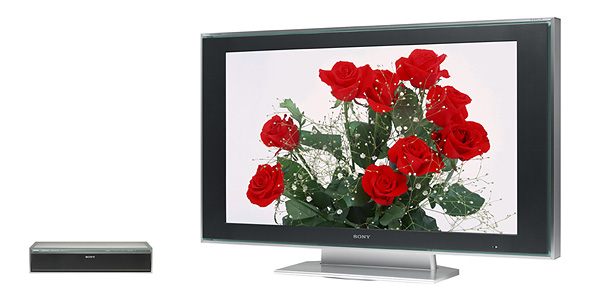Spidermate said:
I'm assuming you haven't seen this before:
http://www.sony.jp/CorporateCruise/Press/200408/08-0819B/img/KDX-46Q005.jpg
Sony today announced the "QUALIA 005," in their WEGA series of LCD TVs, which is the world's first television to use Light Emitting Diodes (LEDs) as a backlight. BUT WHY? According to Sony, this 46" television has the most realistic color reproduction of any set EVER. I'd certainly hope so too, considering it will set you back more than $10,000 USD.
Features on this new set don't stop there, however - Sony managed to cram in their Emotion Engine and Graphics Synthesizer (of PS2 fame) for better image rendering, as well as their "DRC-MFv2" standard-TV-to-HDTV upscaler we reported on just last week. Another bizarro feature inserted in an attempt to justify the 10G pricetag is usage of the "XMB" (Cross Media Bar) GUI, which is currently used on the PSX. I complain about prices a lot, but who am I kidding? I'd get one if I was stinking rich, which I certainly plan to be.
NOW, what would you say that Emotion Engine was orginally designed for? :? Then I would like you to answer me this: was or wasn't the Pentium 3 much more powerful than the Emotion Engine? By no means am I judging the next consoles; I'm just shining a little light on what the Cell may possibly represent as far as its flexiblity and the way it may hold-up to the competiton.
Ever seen Apollo 13? You can get that LEM/Emotion Engine to do things it was not intentioned to do, you know.
If Cell is organized to accelerate media processing, it's going to be worse at general processing (like video cards).
If Cell is organized to handle general loads, it's not going to efficiently render things (like CPUs).
And if Cell is so modifiable to include both (by changing number of APUs, etc.), then saying a product has a Cell processor in it means almost nothing.

